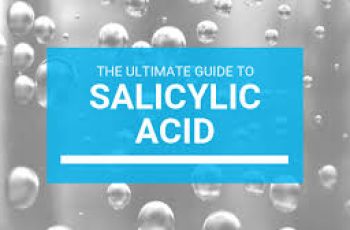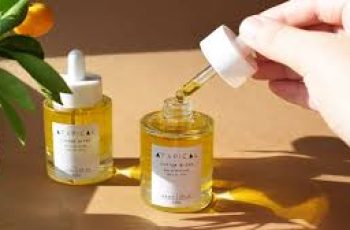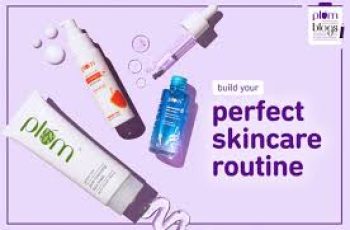
🌿 How to Get Rid of Milia Naturally and Effectively: A Complete Guide to Smoother Skin
If you’ve ever noticed small, white bumps that show up around your eyes, nose, or cheeks, you might have assumed they were just stubborn whiteheads that won’t go away.
However, these tiny, firm cysts are not your typical acne blemishes, and squeezing them will only leave you frustrated—or worse, with red, inflamed skin.
They’re called milia, and even though they’re common and usually harmless, they can be an annoying cosmetic concern that many people are eager to treat.
In this post, we’ll break down everything you need to know about milia: what they are, what causes them, how to get rid of them, and how to prevent them in the future.
Let’s dive into this detailed guide so you can finally feel confident about your skin and understand the best ways to keep milia from reappearing.
✨ What Exactly Is Milia?
Milia are small, dome-shaped white or yellow bumps that typically appear on the face, especially around the eyes, nose, and cheeks, though they can occur anywhere on the body.
They’re made of keratin—a protein found in the skin—that gets trapped beneath the surface, forming a small cyst that’s firm to the touch and doesn’t usually cause pain.
Unlike pimples, milia don’t have a pore opening at the surface, which is why they don’t respond to typical acne treatments or extractions.
There are two primary types of milia: primary milia, which form when keratin gets trapped naturally, and secondary milia, which occur after skin trauma like burns or rashes.
Other factors such as long-term sun damage, use of heavy creams, steroid creams, or skin resurfacing treatments like dermabrasion may contribute to the formation of milia.
Infants commonly develop milia at birth due to residual maternal hormones, but theirs usually clear up within a few weeks without any treatment.
Adults, on the other hand, may experience milia due to slower skin turnover, buildup of dead skin cells, or damage to the skin’s natural exfoliation process over time.
🧪 What Causes Milia to Form on the Skin?
Milia can result from a range of causes, including environmental stress, skincare choices, and skin conditions that damage the skin barrier or impair exfoliation.
Common triggers include overuse of thick skincare products, sunburns, friction from rough fabrics, or healing from burns, rashes, or long-term corticosteroid use.
They’re also more common in people with naturally dry or mature skin, since their skin tends to shed cells less efficiently and trap debris beneath the surface.
Even lifestyle habits like infrequent exfoliation or lack of sun protection can contribute to clogged pores and keratin buildup that forms milia.
🧴 How Can I Get Rid of Milia at Home?
While milia often go away on their own over time, especially in infants, adults may find they linger for months without any noticeable change if left untreated.
If you want to speed up the healing process or prevent new bumps from forming, you can build a skincare routine designed to exfoliate gently and keep your skin clear.
Start with a gentle, non-foaming cleanser twice a day to remove dirt, oil, and impurities without irritating the skin or stripping away protective moisture.
Use a chemical exfoliant once or twice per week that contains alpha hydroxy acids (AHAs) like glycolic acid or beta hydroxy acids (BHAs) like salicylic acid.
These acids help dissolve dead skin cells, reduce congestion, and promote cell turnover so keratin and sebum don’t get trapped beneath the surface.
Be cautious with physical exfoliants like scrubs or brushes, which can irritate the skin and make it more prone to inflammation or further blockages.
Apply a lightweight, non-comedogenic moisturizer daily to hydrate without clogging pores—look for formulas with hyaluronic acid, squalane, or ceramides.
Don’t forget to use a broad-spectrum sunscreen with SPF 30 or higher every morning to protect the skin from UV damage that contributes to milia formation.
Avoid applying thick, greasy eye creams or oil-based balms near the eye area, especially if you’re prone to milia around the eyelids or under-eye region.
Clay masks can also be helpful once or twice a week to detox the skin and draw out excess oil, debris, and trapped particles that might lead to cysts.
And perhaps most importantly—never try to pop or squeeze milia, as they don’t respond like pimples and will only lead to scarring or skin damage.
🔬 When Should You Consider Professional Treatments for Milia?
If you’ve followed a consistent skincare routine for several weeks and the milia still won’t budge, it might be time to visit a dermatologist or licensed esthetician.
Professionals have access to tools and treatments that can safely remove or reduce milia without damaging the skin or causing post-inflammatory marks.
One option is deroofing, where a sterile needle or blade is used to gently pierce the surface of the cyst and extract the keratin buildup inside.
Another option is cryotherapy, where liquid nitrogen is used to freeze and remove the cysts—this method is usually avoided around the delicate eye area.
Laser ablation is also available, where a focused beam of light targets and vaporizes the milia without damaging surrounding skin.
Chemical peels performed by professionals can exfoliate the outer layers of the skin and reduce the appearance of milia over time.
Microneedling and microdermabrasion can also help increase cell turnover and promote smoother, clearer skin by clearing buildup beneath the surface.
👁️ What Causes Milia Under the Eyes and How Do You Treat Them Safely?
Milia under the eyes are especially common because the skin in that area is thin and delicate, making it more prone to keratin buildup and clogged pores.
These bumps can also form if you use overly rich eye creams or if the skin barrier is compromised due to sun exposure or harsh cleansing habits.
Stick to lightweight, fragrance-free under-eye products and avoid using thick concealers or occlusive skincare in this sensitive zone.
Apply an eye serum with retinol or vitamin A derivatives to gently exfoliate and encourage skin cell turnover while reducing keratin buildup.
Use cooling gel eye masks with ingredients like hyaluronic acid or peptides to hydrate and soothe while minimizing puffiness and buildup.
If you do seek professional treatment for milia around the eyes, choose a specialist with experience treating the eye area to avoid any complications.
🚫 What Happens If You Try to Pop Milia at Home?
It might be tempting to squeeze milia when you mistake them for pimples, but doing so will only irritate the skin and push the keratin deeper into the pore.
Milia lack an opening on the skin’s surface, so any attempt to manually pop them will likely fail and could lead to scarring or long-term skin damage.
Trying to remove milia at home with tools or needles without proper sterilization and training can introduce bacteria and cause infections.
It’s always better to wait them out, use targeted skincare, or see a professional instead of risking permanent damage from DIY extraction attempts.
⏳ Do Milia Eventually Go Away on Their Own?
Yes, milia often go away without treatment, especially in babies, where they typically disappear within two to four weeks after birth without any intervention.
In adults, the healing process may take longer—sometimes several months—but keeping a consistent skincare routine can greatly reduce their appearance.
The key to getting rid of milia naturally is patience, consistent exfoliation, sun protection, and avoiding any product that clogs or suffocates your pores.
If your milia still haven’t resolved after a few months of diligent care, it may be time to consult a skincare professional for more advanced options.
💡 Final Thoughts: Your Skincare Checklist for Milia Prevention
Wash your face daily with a gentle cleanser, and exfoliate 1–2 times per week with a mild chemical exfoliant that suits your skin type and sensitivity.
Use lightweight, non-comedogenic skincare products and avoid heavy creams, especially near the eye area, where milia commonly form.
Apply SPF daily to shield your skin from harmful UV rays, which can slow exfoliation and increase the chance of keratin buildup in the pores.
Incorporate hydrating serums with hyaluronic acid, niacinamide, or ceramides to support your skin barrier and maintain a healthy, smooth texture.
Try not to touch or rub your face often, especially with unclean hands or rough fabrics like pillowcases or towels, which can irritate or damage the skin.
And most importantly—be kind to your skin, stay consistent, and don’t panic if milia pop up now and then; they’re harmless, treatable, and often temporary.



